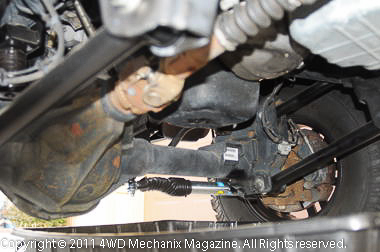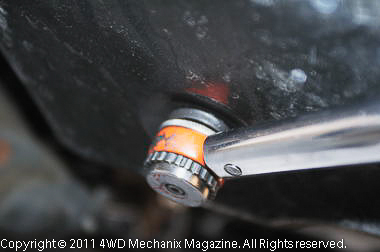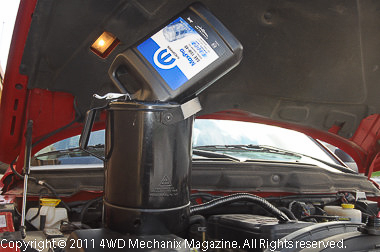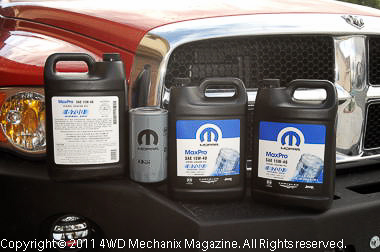
Engine oil deteriorates and becomes contaminated over time. Quality synthetic oils and some alternative fuels like propane can reduce engine oil breakdown. Regardless of the oil type, however, every Dodge Ram truck engine requires periodic oil and oil filter changes to remove contaminants.
If not changed in time, the oil filter can clog. Excessive contaminants or stretching too far between oil changes will clog an oil filter and compromise engine oiling.
On modern engines, a “bypass valve” will open in the event of a clogged oil filter. This allows vital oil to bypass the clogged filter and continue oiling parts. The by-pass system protects bearings and other critical parts from oil starvation and risk of immediate failure. However, the by-pass function comes with a price: contaminants and damaging debris course through sensitive parts of the engine.
Engine damage from by-passing is visible on teardown as bearing etching. Debris, embedded in the soft insert bearing surfaces, reflects the lack of filtration. Dirty, fuel-diluted oil also shortens engine life.

For this reason, routine oil and oil filter changes help maintain a cleaner engine, reduce the buildup of contaminants and assure that oil gets filtered.
This ‘how-to’ covers a routine oil change on the 5.9L Cummins inline six-cylinder turbo diesel. The steps apply to the Dodge-Ram gasoline engines as well.
Changing the Engine’s Oil and Oil Filter
This ‘how-to’ outlines the steps for a professional oil and filter change. The tools required for this work are minimal.

1. An oil changed begins with draining the old oil. Hot oil can cause severe burns and injury. The oil should be warm, not hot, for draining. Warm oil permits immediate flow and likelihood that more contaminants will end up in the drain pan.


2. A notched filter cap wrench is advisable. Here, the cap tool fits snugly on the bottom (end) of the filter. The diesel 5.9L’s oil filter mounts vertically, which is helpful. Note wiring beneath the filter. Carefully lower the filter past this wiring. Avoid tilting or spilling oil from the filter. Several oil changes into the process, this gets easier!

**************


3. A filter might fit an engine but not have the proper micron filtration, pressure drop across the filter or bypass valve setting. This Mopar-Cummins filter is your assurance that the oil filter meets the stringent engineering requirements set by Cummins and Chrysler.

4. This Mopar oil filter mounts vertically on the Cummins diesel. Pre-priming before installation is possible. Fill the oil filter to near full. (Allow for slight tilting of the filter during installation.) Make sure oil entering the filter is spotlessly clean. Spread a film of fresh oil on the gasket surface.

5. Mopar’s MaxPro® 15W-40 oil is specified for the Cummins turbo-diesel. Properly maintained Cummins inline six-cylinder engines are legend. Some run a half-million miles without a major teardown. This is only possible with regular oil and filter changes. Mopar® offers a full line of engine-specified lubricants for your gasoline or diesel Dodge-Ram truck. See your local Ram Truck dealer!

5. A five-quart oil container with flex spout helps reduce risk of spilling oil during the crankcase fill. Set the can and spout on a stable base that will support the weight. Make sure the fill can is clean before pouring fresh oil into the can and engine.

6. The Cummins inline six takes 12 quarts of oil when a new filter is installed. This is the third gallon of Mopar MaxPro® oil poured into the 5.9L turbo diesel. (One quart from the first gallon went into the new oil filter before installing the filter. Install the filter before filling the crankcase.)

7. The flex spout helps reduce risk of spill. After all oil drains from the can, simply swing the flex spout upward to stop the oil drip. Quality oil can be expensive. Make sure all of the oil ends up in the engine! Install and secure the oil fill-cap.

An effective, quality oil change begins with the best products. This is the oil and filter recommended by Mopar® for the Cummins turbo-diesel. Make Mopar® your source for original equipment quality and engineering…See your local Chrysler Group or Ram Truck dealer for lubricants, filters and service parts!
